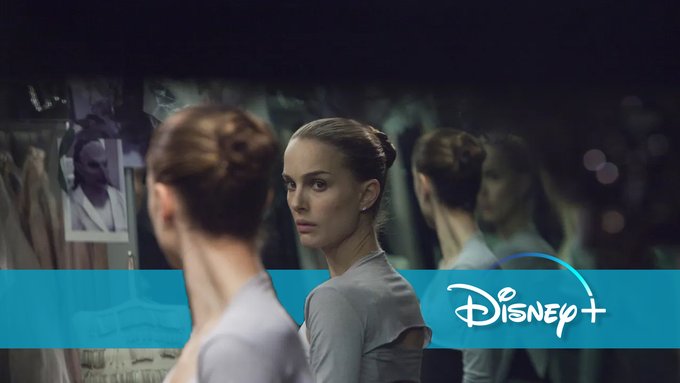Darren Aronofsky’s “Black Swan” was nominated for five Oscars – Natalie Portman won it for Best Actress in a Leading Role. Why you should stream the gripping thriller with horror elements on Disney+ is revealed by our writer Lars-Christian Daniels.
When I once went to see “Black Swan” in the cinema with my better half, I had to take a good telling off after the credits. Before buying the ticket, my rather squeamish girlfriend had assumed that Darren Aronofsky’s star-studded box-office hit was a harmless remake of the Tchaikovsky classic “Swan Lake”, which has been shown on ballet stages around the world for decades… and she was wrong in her assessment.
… and was, of course, completely wrong with this assessment. “Black Swan” is more of a horror film than a classical dance film. And anyone tuning in in false hope of the latter is definitely streaming the wrong thing on Disney+.
The work of “The Whale” director Aronofsky is instead a disturbing and visually impressive psychological thriller in which the virtuously staged ballet rehearsals provide the narrative framework for the sweeping story and a highly emotional finale.
THIS IS WHAT “BLACK SWAN” IS ABOUT
A prestigious New York ballet company is planning a new production of Tchaikovsky’s “Swan Lake”. Although ambitious and sensitive ballerina Nina (Natalie Portman) trains harder than anyone else in the group, she doesn’t quite believe she has a big chance at the lead role. The eccentric director Thomas (Vincent Cassel) wants the same dancer to perform the White Swan and the Black Swan, but only trusts Nina with the White Swan. When she fails at a rehearsal, the dream seems to be finally shattered – much to the disappointment of her mother Erica (Barbara Hershey), who used to be a ballerina herself but was nowhere near as successful as her daughter.
When Nina tries to talk to Thomas again, he suddenly presses her. She painfully rejects him. The director thus realises that Nina can come out of her shell as powerfully and energetically as he would like for the Black Swan – and promptly casts her for the leading role. For Nina, however, this is the prelude to a nightmare that gets worse day by day: the ballerina is under enormous psychological pressure and becomes increasingly paranoid. Soon she is plagued by terrible hallucinations. And there is also the similarly talented Lily (Mila Kunis), who also had it in for the lead role and has Thomas wrapped around her finger…
The fact that “Black Swan”, as outlined in the introduction, is not a harmless dance film is already revealed in the opening minutes. The film begins with Nina in a radiant white swan outfit doing lonely pirouettes on stage to the famous Tchaikovsky sounds. There is no audience to be seen. Her opening dance is reminiscent of a music box figure – a metaphor that is taken up later. Then a man dressed in black joins her. The music suddenly becomes dramatic, almost droning. He transforms into a black-feathered horror figure and whirls her through the air as she dances. Her look becomes panic-stricken: the woman is scared. When it is over, she seems relieved. Then Nina wakes up.
Only an introductory nightmare, but at the same time a foretaste of what is to come. The gloomy visual language, which has nothing at all in common with the supposedly ideal world of glittering ballet, runs like a thread through the film. So does the visual play with light and shadow, with black and white, the central optical contradiction in “Swan Lake”. It often finds its counterpart in the set design, for example in Thomas’ flat or Nina’s bathroom. Innocence personified is at the mercy of the powerful and encroaching director; the Weinstein scandal and the metoo movement send their regards.

